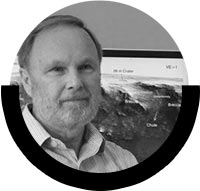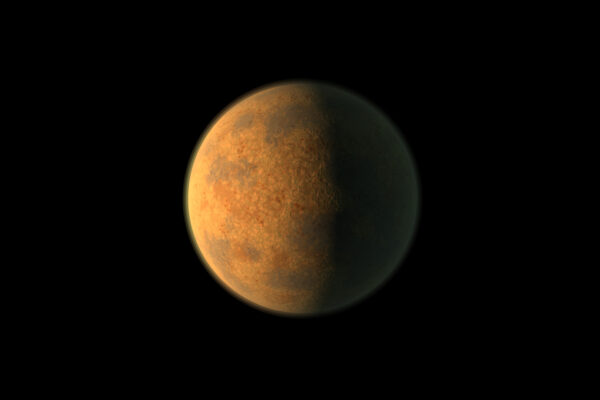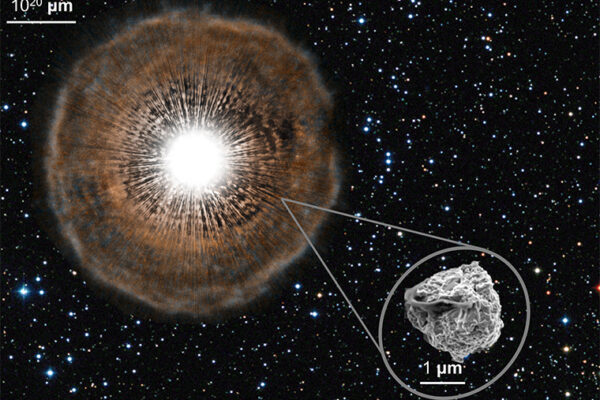Boundless
A rumination on space and the human capacity to imagine.
Throughout human history, we’ve made our most consequential discoveries by pushing through boundaries once thought to be unbreachable.
First through our senses …
then by logic …
then exploration …
… we’ve broken through those boundaries and expanded what we believe to be possible.
Now, we’re able to see what couldn’t be seen, transport ourselves to places we didn’t know existed, and witness our most fantastical ideas become not only real, but in many cases, commonplace.
It would be naive to think that future boundaries will be unbreachable. Doing so would put an end to our ever-evolving understanding of the cosmos and our place in it.
So we keep pushing.
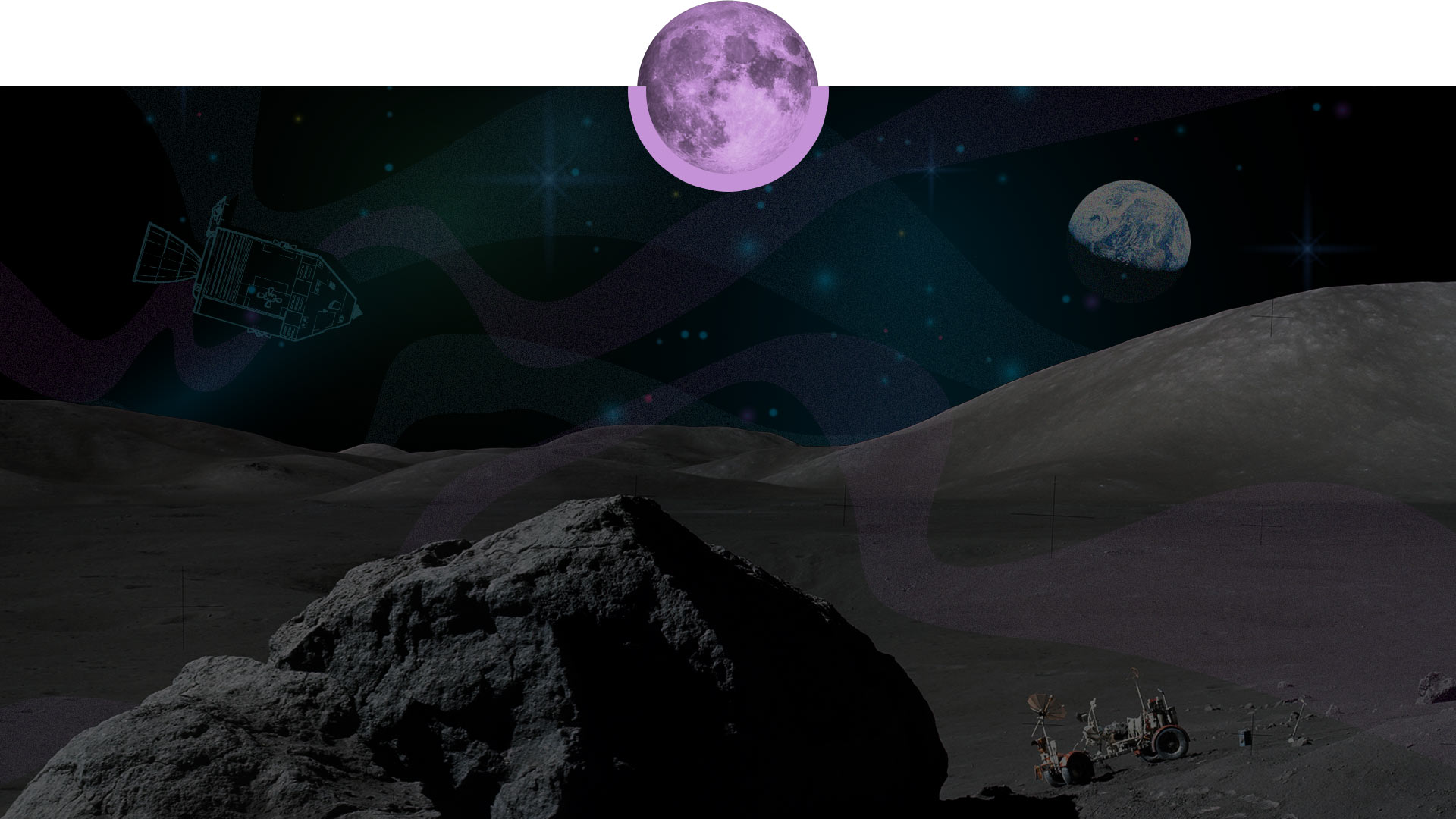
Unbound by space, we transport our senses across galaxies on rockets and explore strange, new worlds with rovers. We outsource incomprehensibly complex problems of logic to computers that no longer simply compute, but also, in their own way, think.
Moon-age daydream
It could be argued that leaving this rock and setting foot on another is among our most technologically and psychologically impressive achievements. Once bound to Earth, we could not resist the compulsion to test even that boundary. Humans broke free of gravity and literally raced to the Moon.
Unfortunately, few of us will have the chance to take that trip.
Thankfully, those who did brought back souvenirs.
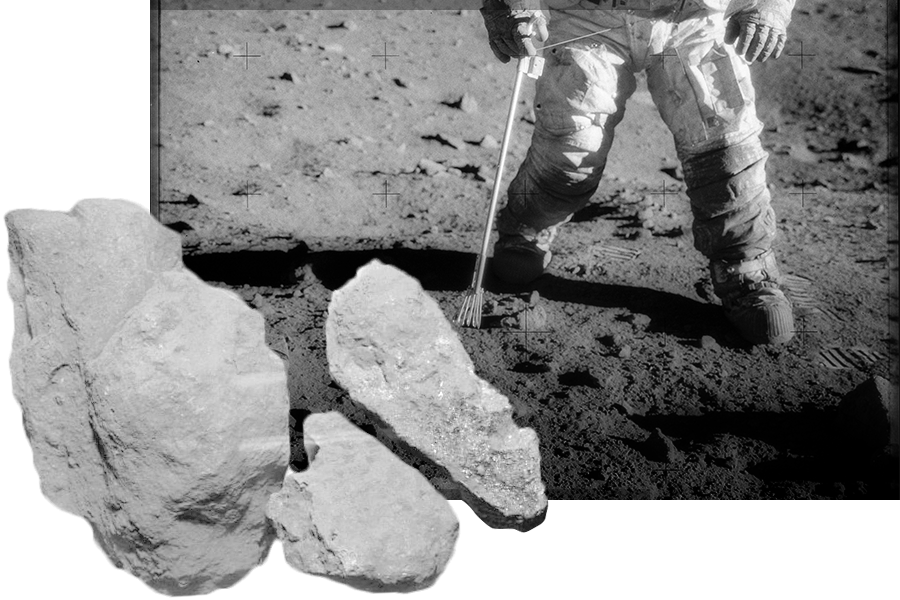
Lunar rocks collected by Apollo 11 astronauts Neil Armstrong and Buzz Aldrin on July 21, 1969.
Scientists continue to study them to this day, making new discoveries in part due to advanced technologies that didn’t exist fifty years ago.
(Image credit: NASA)
Apollo 11, the first manned lunar landing mission, launched from the Kennedy Space Center on July 16, 1969, and landed on the Moon July 20. Four days later, the mission returned to Earth — bringing with it those first samples of lunar rock and soil to be studied. They are being studied still.
Rocks and other samples brought back by Apollo 11 and subsequent missions have fundamentally changed our understanding of conditions on the Moon and allow us to peer into the Moon’s past.
Bradley L. Jolliff, a planetary scientist at Washington University in St. Louis, has been studying lunar samples for more than three decades. “We used to think of the Moon as bone dry,” says Jolliff. But looking at old lunar samples using new equipment can illuminate properties that were there all along. “SIMS (secondary-ion mass spectrometry) is sensitive enough to measure water. Now we know it’s not completely dry.”
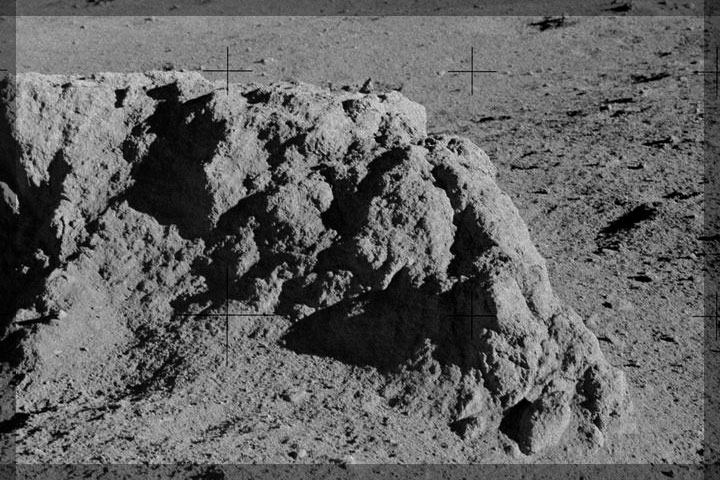
Moon rock time capsule
NASA set aside pristine samples for future generations, so we could ask new scientific questions.
Studying lunar samples can also help us to understand the formation of the solar system. “We’ve used new technology to better determine the ages of craters,” Jolliff says. “It’s really helping us work out the timing of the heavy bombardment,” a time in our solar system’s history when planets were under a barrage of asteroid and meteor strikes.
Narrowing the time frame of this event can help tell us whether gas-giant planets formed close to the sun and then drifted outward, gravitationally disturbing objects further out in the solar system and sending them crashing into the inner planets. Or if planets like Jupiter formed farther from the sun, migrating inward, and then reversing course, settling in their current orbital locations.
“If we could nail down the age of the heavy bombardment,” says Jolliff, “it would really tell us something fundamental about the early solar system.”
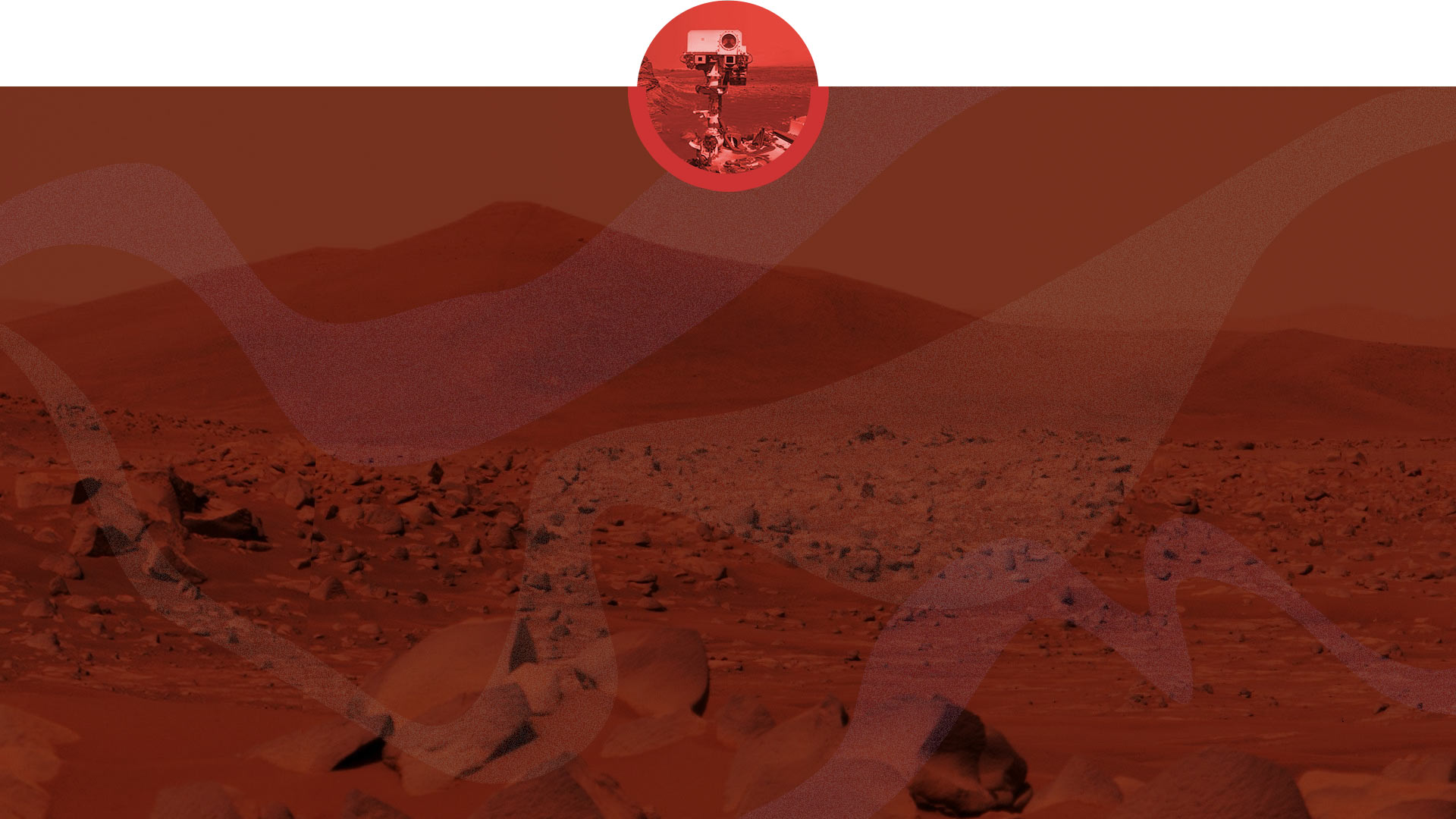
We’ve set foot on the Moon, but we’ve sent our senses well beyond. We’ve roved across the surface of Mars and swooped in for closer looks at planets farther out.
Is there life on Mars?
In June 2018, the Mars Exploration Rover Opportunity succumbed to a massive dust storm, the largest researchers have seen on Mars. NASA officially declared “mission complete” in February 2019 after numerous failed attempts to hail Opportunity, which had already outlived its twin, Spirit, by nearly eight years.
Ray Arvidson, the mission’s deputy principal investigator, known by his colleagues as the “Stoic Swede,” says he did not shed any tears over the death of Opportunity. But he understood how researchers and members of the public who had spent years following the rover could feel a deep affinity with the machine.
It’s just metal and bolts and stuff. It’s not a person. But this is a vehicle that’s acquiring data with the acuity of the human eye at the height of a person in a terrain that looks eerily like the Earth. It’s a much more human experience.
Ray Arvidson, deputy principal investigator, Mars Rover missions
(Image credit: Mark Katzman/Washington University)
The Mars Exploration Rover mission began in the early 2000s. Two rovers, Spirit and Opportunity, were launched in 2003 and landed on Mars in January 2004. The mission was simple: Follow the water. Looking at ancient Martian rock could tell how warm and wet Mars might have been in early geologic time.
“We followed the water, and we found dramatically amazing evidence for water being in the ground and on the surface billions of years ago. We found places that would have been habitable.”
We found places that would have been habitable.
The rover Spirit found evidence of fumaroles, hydrothermal vents and silica deposits, similar to what exists at Yellowstone National Park. Silica is important because it’s evidence for warm, wet conditions.
What Opportunity discovered is even more remarkable. The rover found hematite concretions, or little balls of hematite. These concretions, called “blueberries,” are found all over Earth … but on Mars their implications are stunning.
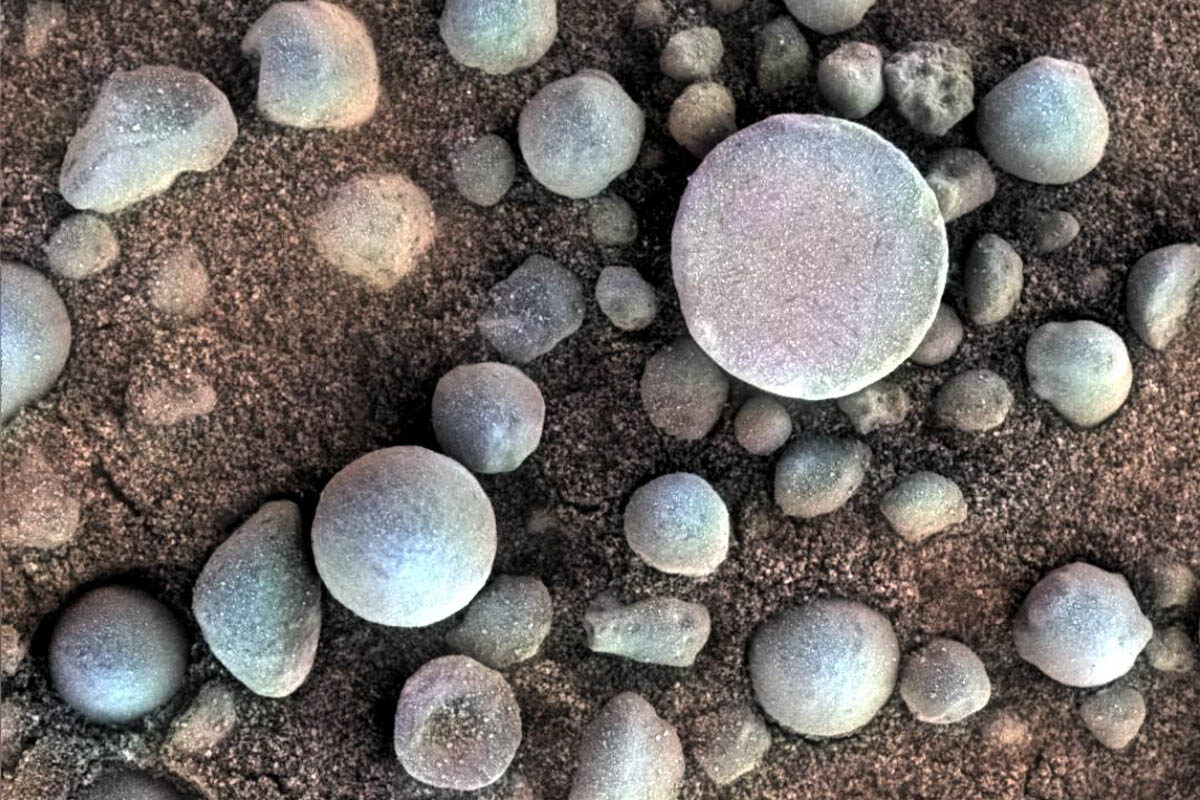
(Image credit: NASA/JPL-Caltech/Cornell/USGS)
“We totally lucked out,” Arvidson says. “Opportunity bounced into Eagle Crater, and only 5 meters away on the wall of the crater were these rocks that — in terms of their chemistry, mineralogy and structures — said, ‘I formed in an ancient lake.’ The formation would have demanded extended periods of liquid water on the surface. So, even if we never left the crater, the mission would have been a success. We were ecstatic.”
The data that Spirit and Opportunity collected is unprecedented and invaluable for future research. The Geosciences Node of NASA’s Planetary Data System, one of six discipline-specific nodes located at institutions around the country, is housed at Washington University in St. Louis. It is the lead archive for all landed missions to Mars, preserving data that will be mined by researchers for decades to come. The archive includes details about both rovers’ every move as well as the many images that helped this mission capture the public’s imagination.
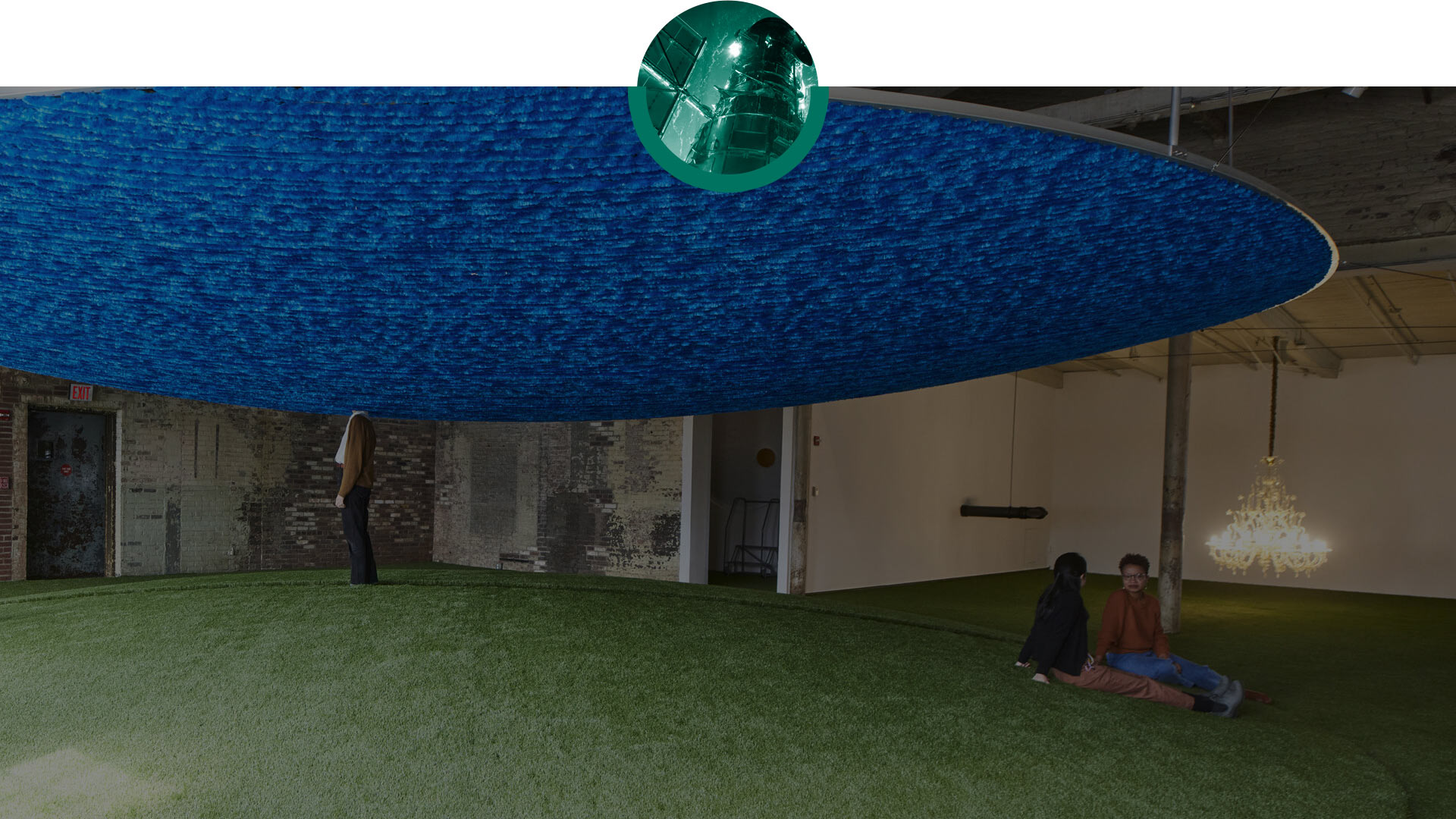
Humans evolved to be able to see just beyond the horizon. Then we discovered we can travel past it. Perhaps that experience of breaking through the boundary of the horizon spurred us to develop so many marvelous devices that enhance our range of vision — pushing through what we once thought were limits and seeing what we once thought unseeable.
Artist Amy Hauft’s Mass MOCA exhibition, 700,000:1 | TERRA + LUNA + SOL, seeks to make visitors palpably aware of their relationship to the curve of the earth and our distance from the Moon. Hauft is director of the College of Art and Graduate School of Art in the Sam Fox School of Design & Visual Arts at Washington University. (Photo courtesy of the artist.)
Humans are able to see just a sliver of the electromagnetic spectrum: .0035 percent, to be exact. Hubristically, we call this “visible” light … though plenty of other animals can see beyond this range.
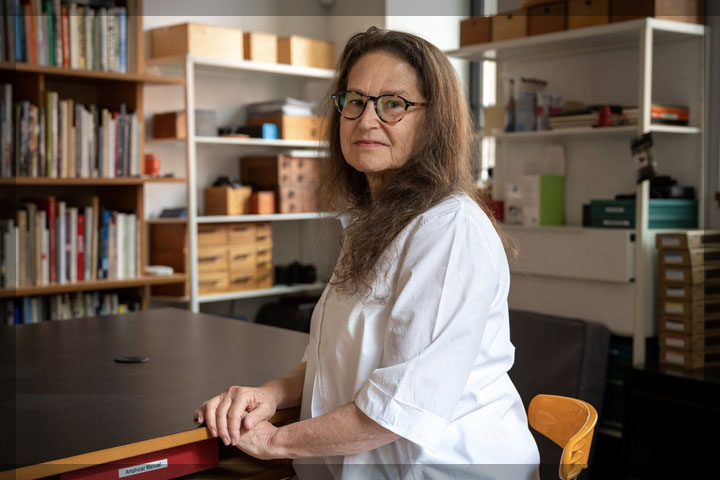
Questions of perception
In “700,000:1 | TERRA + LUNA + SOL,” artist Amy Hauft grapples with questions of perception, celestial scale, and the space between abstract and experiential knowledge.
Still, in the environments in which our eyesight evolved, it has served us well: It was enough for our ancestors to spot predators and, in our modern age, for us to pick our loved ones’ faces out of a crowd.
We can gaze upon sunsets so dazzling and vibrant it’s difficult to imagine that anything more spectacular exists to be seen.
But there’s so much more.
X-ray visionaries
In the Land of the Midnight Sun, at 1:45 am on July 12, 2022, an enormous white balloon launched from the Esrange Space Center in Kiruna, Sweden. It’s mission? To carry aloft a massive telescope, 13.5 meters long.
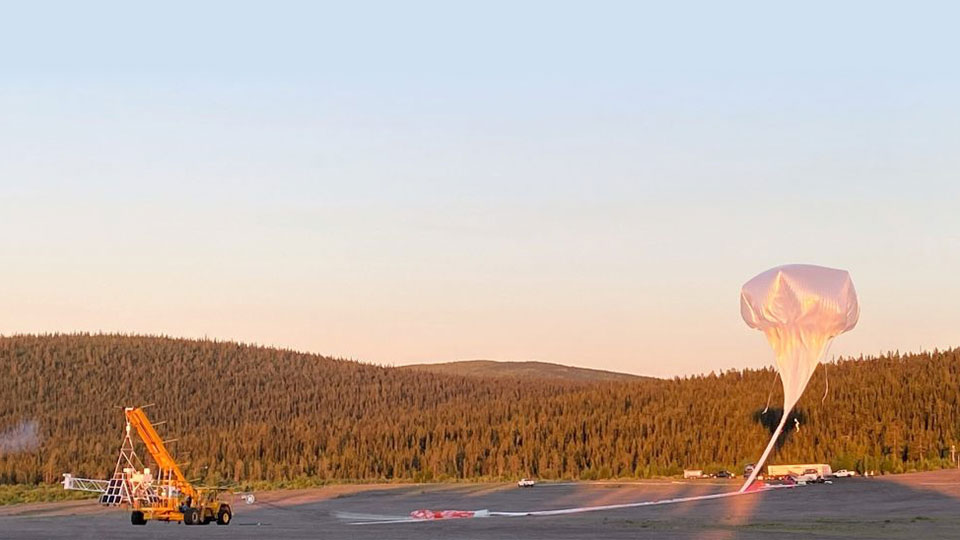
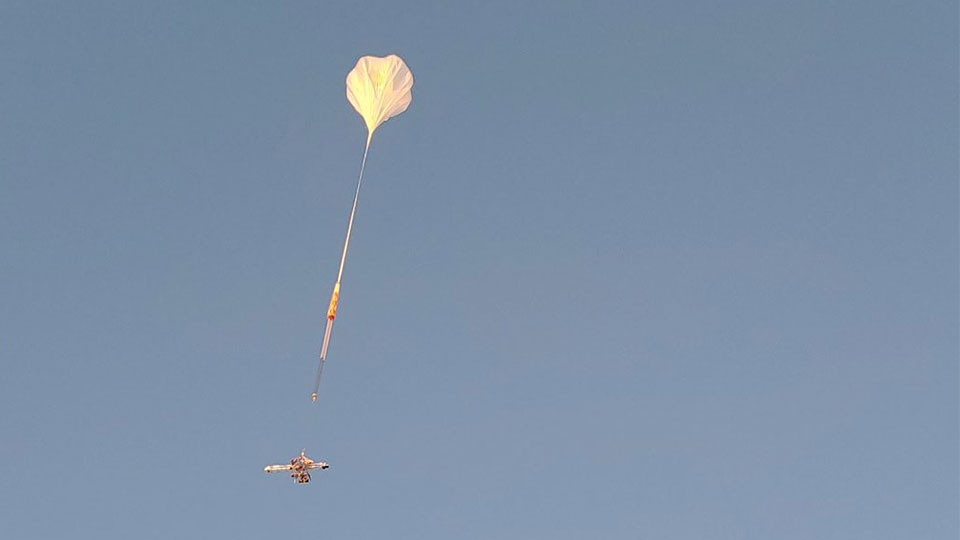
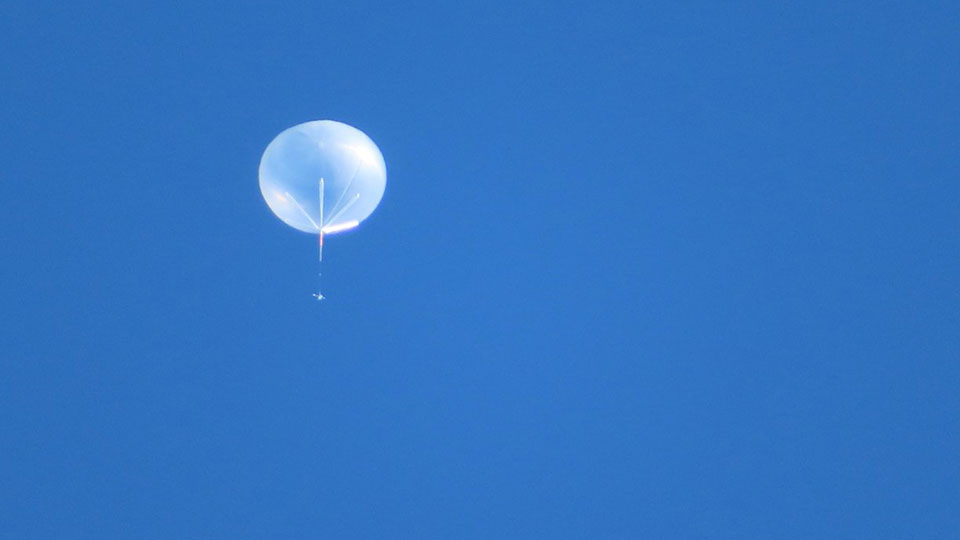
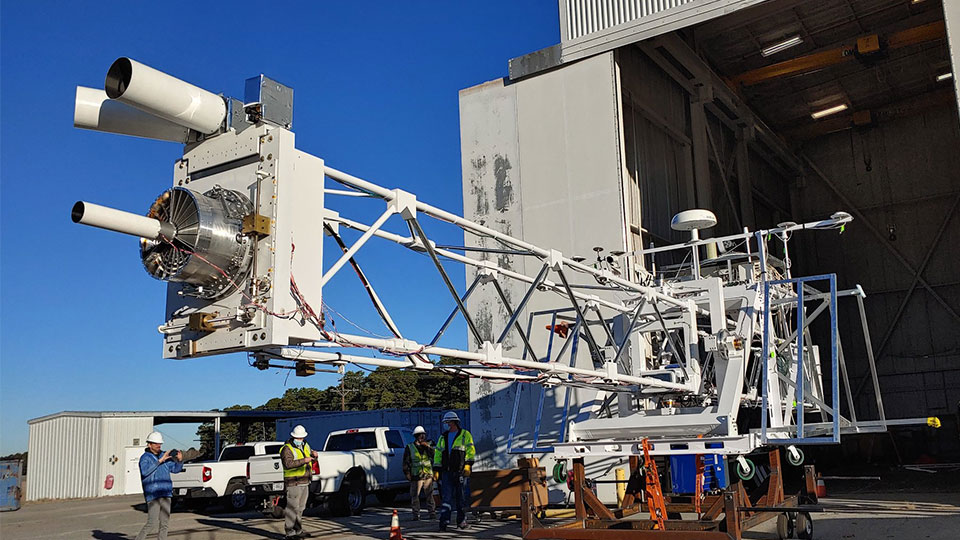
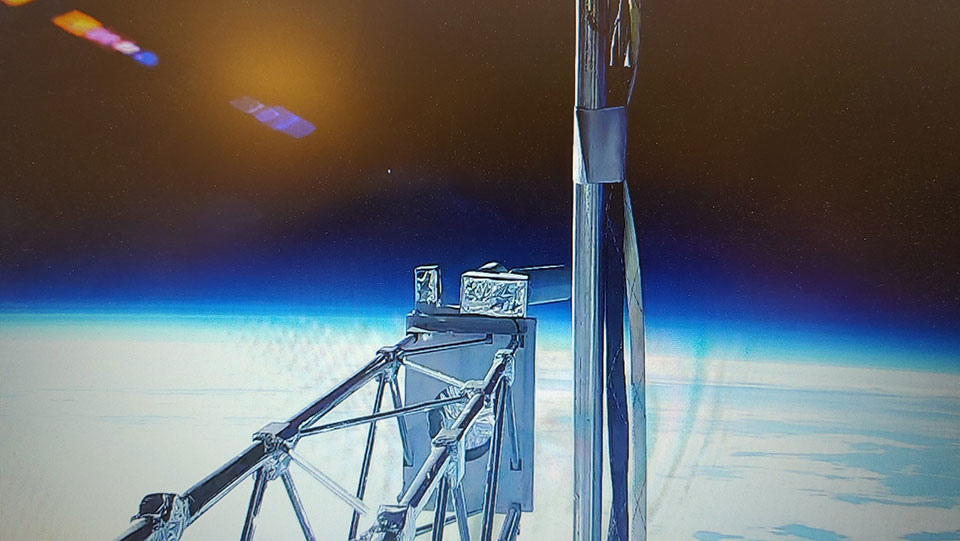
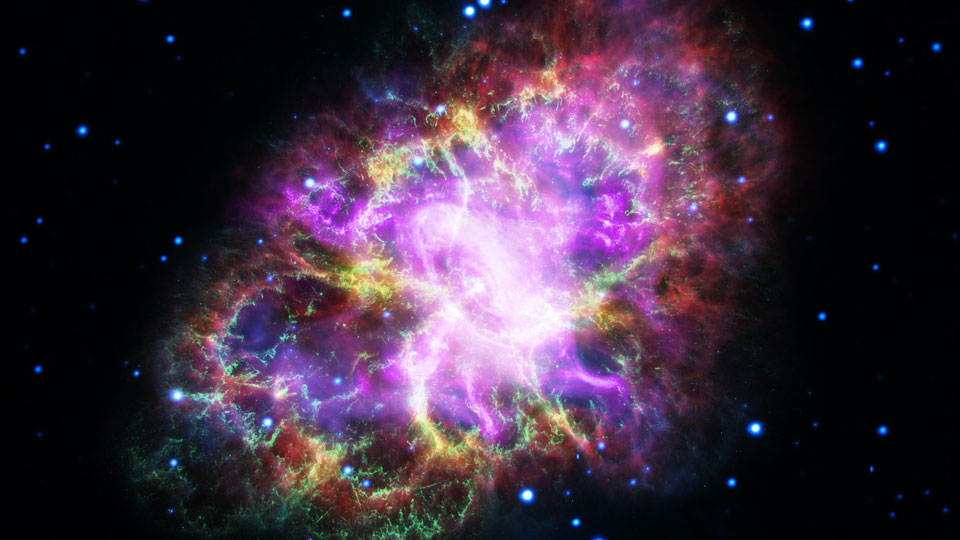
Physicist Henric Krawczynski leads a collaboration of 51 scientists from the United States, Japan, and Sweden on the project. He and his team at WashU developed XL-Calibur and its successful predecessor X-Calibur with the goal of unlocking the secrets of black holes and neutron stars, some of the most mysterious objects in the universe.
By observing the polarization of X-rays from these bodies, scientists can better understand the complex spacetime around them, and may be able to observe rare quantum effects close to extremely strongly magnetized neutron stars.
New technologies allow us to ask questions that, before their existence, we couldn’t haven’t even imagined. Our “marvelous devices” don’t simply help us to see things that are bigger or smaller or farther away — they nudge us to see the world in new ways, with new perspectives.
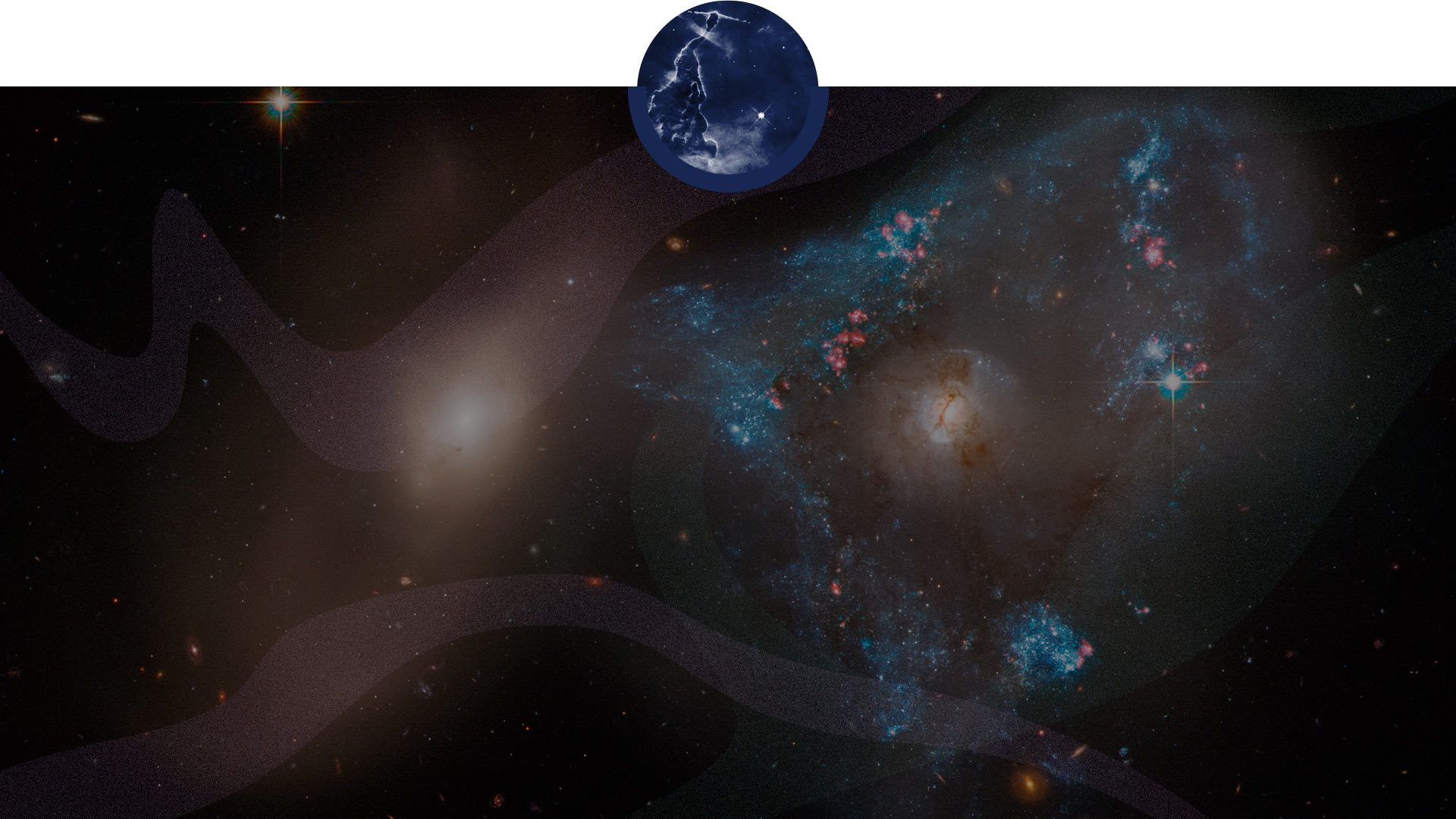
I suddenly saw something I might haunt the stratosphere for, something for which I’d fall into the sea … a chance to discover the smallest breath in the deepest night and, in so doing, vanquish the void that lurked between human existence and all else in the cosmos.
Sarah Stewart Johnson, author, excerpt from Sirens of Mars
A separate genesis of life?
In her book The Sirens of Mars: Searching for Life on Another World, Sarah Stewart Johnson recounts an experience she had as a college sophomore during a class trip to Hawaii led by Ray Arvidson. While climbing the dormant volcano Mauna Kea, she traversed well above where trees and plants could grow, reaching an ashy, smoldering landscape above the clouds. There she made an unexpected discovery — a tiny fern growing beneath a rock — revealing to her the persistence of life itself. Something in that moment made her become a planetary scientist. Arvidson became an invaluable mentor to Johnson and years later, she worked with him on the Spirit and Opportunity rover missions.
Johnson says of her book: “I wanted to offer a different approach than when you solely look at the science. There is this human history there. The more you study it, the more beauty and profundity there is.”
Johnson’s research focuses on how to detect and decode biosignatures — traces of life — on other planetary bodies. She is especially excited about a NASA-funded project called the Laboratory for Agnostic Biosignatures, which is searching for traces of life, but not as we know it. “We’re looking for types of life that don’t presuppose a particular molecular framework,” she says. By examining signs of energy transfer, compartmentalization or fractionation of elements, or chemical equilibrium, Johnson hopes to get at what might be a separate genesis of life.
“All we know about life is from the kind of DNA-, carbon-based life on our planet, but it’s essentially one data point. Having a second data point, and especially if we found it right here in our solar system, would suggest that the entire universe is full of life.”
Boundaries, it seems, beget boundaries.
Still, there will always be visionaries able to see beyond them.
Visionaries in this story

Sarah Stewart Johnson
Life Seeker

Bradley L. Jolliff
Lunatic Explorer

Henric Krawczynski
Black Hole Hunter

Ryan Ogliore
(Moon)rock Star
Producers: Kristin Grupas, Sharon Derry
Lead Writer: Brandie Jefferson
Writers: Sharon Derry, Shawn Ballard, Ryan Rhea
Editor: Leslie McCarthy
Designers: Kristen Gau, Brandy Rustemeyer
Videographer: Tom Malkowicz
Web developers: Alex Popp, Bryan Reckamp
Contributors: Talia Ogliore, Javier Ventura, Liam Otten, Cassaundra Moore
